WordPress has become the go-to CMS choice. It’s the easiest and fastest way to get online for a blog or a business, and the versatility, customization, and ease of setup and operation are second to none.
Yet, it does leave quite a bit to be desired, which is why people seek other alternatives, or in this case, a more complete solution that offers the best of both worlds. Yes, we are talking about converting WordPress sites to static HTML sites without ditching your WordPress CMS.
In other words, a setup like the one we are talking about would allow you to have the ease of use of managing your content and site with WordPress while avoiding some major issues associated with the CMS including hacking vulnerabilities, speed and performance issues, overdependence on a hosting service and so on.
But let’s take one thing at a time as we walk you through all the pros and cons of converting WordPress to static site, as well as the different options you can use to do it.
WordPress and its growing popularity
WordPress is the world’s most popular CMS (Content Management System). A CMS is basically software that allows users to create and manage their websites without any coding knowledge.
And WordPress turns out to be pretty good at doing just that. It’s very versatile and offers tons of plugins to allow users to implement any kind of functionality they want on their website without having to even touch the code.
WordPress’s versatility is also the reason for its popularity, which is clearly evident in the fact that it powers about 33.5% of all the websites on the internet.
WordPress sites and the important factors you must consider
While we just gave you an overview of WordPress, it’s also important to consider the security, performance, and SEO of WordPress sites as they tend to be crucial factors when it comes to the overall web experience of your business.
Security is a surprisingly underrated factor that most users do not give much importance to. There are more than a few cases of successful businesses going down and never being able to recover from major security breaches of their website and data.
It’s fair to say that WordPress doesn’t offer the best in terms of security, especially by default. However, you can hire an expert or take some security measures to improve the overall level of your WordPress site’s security.
Pretty much the same goes for the performance aspect as well. While the performance isn’t exactly bad by default, a WordPress site does require a fair few optimizations to be more functional and faster.
The SEO aspect is certainly something WordPress has quite an edge on compared to other CMS options. WordPress sites are very easy to optimize for SEO, and there are many plugins that handle almost all the SEO optimization needs of your site.
But many users still do find the need to migrate to a static version of their WordPress website. Let’s find out why.
Dynamic vs. static websites
We have already covered most of the important benefits related to the dynamic nature of WordPress. There are virtually endless options to choose from as far as the themes and plugins are concerned so that you can easily and quickly give your website the kind of look and functionality you want without having to mess around with the code at all.
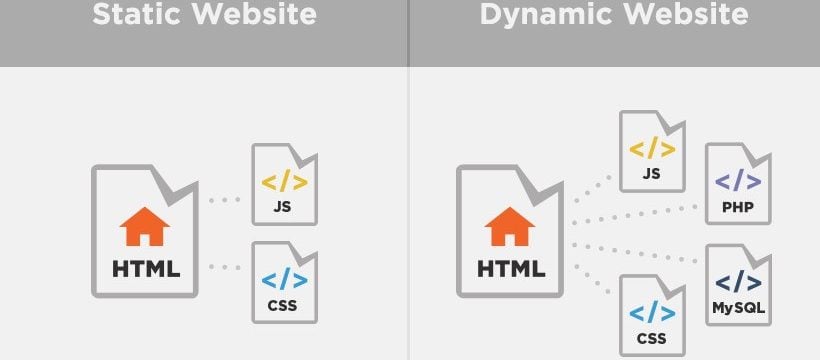
But this dynamic nature does come with its own limitations, which is something we need to discuss in a bit more detail.
Dynamic content technically means that every time a user visits your website, a request will be made and the required data will be fetched from your database to serve them what they requested.
Imagine this happening a million times a month for medium to high traffic websites and like 10 million times a month for really high traffic websites.
This does raise some concerns, particularly on the performance and security front. As for the former, your site’s speed tends to take a hit, which is one of the important SEO factors in Google’s eyes.
But there’s more to it. As the database has its own limitations, a huge spike in your traffic may cause it to stop functioning as it may not be able to handle the increased load, resulting in your website going down too.
What’s more, your website may go down even if there’s a huge spike in traffic of one of the many other websites hosted on the same server as your site, which is what the case is with most cheap shared hosting services.
Then comes the security part. Most hacking incidents usually happen on the database side. Furthermore, Open Source platforms like WordPress are far more vulnerable to hacking attacks, as all the attackers need to do is find a particular vulnerability that can later be scaled on a much higher level.
Similarly, just like with the performance, if any other site hosted on the same database as your site gets hacked, the chances of your site getting hacked too increase significantly.
Needless to say, these issues do call for a lot on the maintenance front. Outdated themes and plugins can make your site more vulnerable to security and other issues, so they need to be updated regularly.
Any plugin or theme getting hacked or infected with malicious code can lead to mass-level hacking attempts and attacks too, so you also need to be careful about the type of themes and plugins you use and remove the ones that have become vulnerable.
However, most users that are really concerned about the security of their WordPress site also have to implement additional security measures, such as premium security plugins.
Advantages of static websites
So, why you shouldn’t want to convert WordPress to HTML? As static sites do not use a database, they are not vulnerable to most of the potential issues we discussed above. In addition, they offer a lot of performance and security benefits as well.
Let us cover them in detail below.
Security
As we just mentioned above, a static website doesn’t need to use a database. This means it can’t be hacked by hacking a database through practices like SQL injections (SQLi), and Cross-site Scripting (XSS), which is alarmingly common with WordPress sites depending on a database.
Similarly, a static site also can’t be hacked just by hacking some other site on the same database as your website. A static website is also not vulnerable to all the hacking possibilities that most sites using Open Source software like WordPress are.
You also don’t run the risk of getting hacked due to using outdated or infected themes or free plugins. So by simply using a static website, you improve the security of your website significantly.
Speed
We discussed above how dynamic websites may have speed issues as they need to make requests to the database and fetch the requested content from it. But as a static website uses pre-rendered pages and not a database, it loads much faster as there’s no back-and-forth involved as with dynamic sites.
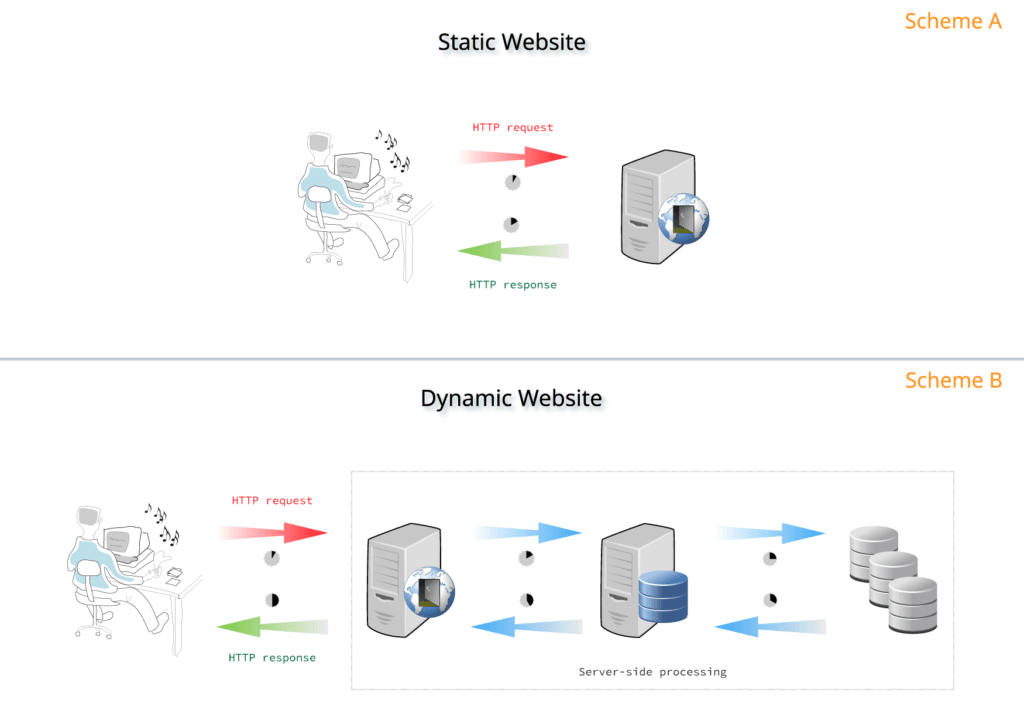
The speed improvement will not only help ensure a better user experience but also get you in the good books of Google on the SEO front.
Maintenance
Again, with static websites, there are no plugins or themes to keep updating regularly. There’s not much to do in terms of speed or performance optimization. There’s no need to hire an expert to improve the speed or performance of a static site.
There’s much less to worry about when there are traffic spikes when compared to traffic spikes for dynamic sites. All these things certainly mean a much easier time maintaining your site and being able to focus better on the more important parts of your online business.
Disadvantages of static websites
Now what are the cons of converting WordPress to HTML? As far as the disadvantages of a static website go, a lot depends on how you go about converting your dynamic WordPress site into a static one. As using plugins is usually the more popular option than using other solutions, let us discuss the disadvantages from that point of view.
Too technical for the average user
Converting a dynamic site into a static site can get too technical for the average WordPress user. There are a lot of complicated steps involved and any mistakes during the process can be hard to fix.
For instance, if you decide to use the popular Simply Static plugin for converting your site into a static one, you would first have to create a subdomain and transfer your WordPress installation there, while you set up the static site in the plugin settings to receive the site files.
There would be an additional step involved if your WordPress installation and your website files are on different servers, and you would have to download the static files as a zip file and upload them to your server.
If you haven’t done anything like this before, it can quickly get overwhelming and leave a lot of room for mistakes and messing things up, which can be hard or expensive to fix. Some rather common potential issues include the image files not getting transferred along with the rest of your site’s files, or your CSS encountering issues.
No easy CDN option
If you don’t already know, a CDN refers to a Content Delivery Network. It’s basically a source that serves the required files of your static site to your users, ideally from a location closest to where most of your users come from so that they get a fast loading time.
Now, as no static site generator plugin – including Simply Static that we referred to above – use a CDN that would handle this task for you, it’s something that would be left to you. In other words, you would have to configure your own solution here.
Limitations in functionality
Coming to the functionality side of things, creating a static site using WordPress to static HTML generator plugins has quite a few limitations. You can’t use contact forms, have a site search function and comments, or anything else for that matter that are dynamic in their function. Using third-party solutions is an option but it can get expensive and difficult to set up as well.
In addition, if you have a lot of redirects on your site, you would lose much of the advantage that you gain on the SEO front by going static. This is because the plugins don’t create a .htaccess file for your site, and instead use meta tags for all your redirects which isn’t good for SEO.
Finally, there’s also the fact that static sites generated using plugins come with some maintenance difficulties as well. The biggest thing to note here is that any change you make to your site would lead to your whole site being republished, which may not be much of an issue for smaller sites but could get considerably time-consuming for bigger sites.
How to convert a WordPress site into a static HTML site?
Now that you’re aware of both the advantages and disadvantages of making your WordPress site static, let us discuss how to convert WordPress to static site, the two options you have, and how you can get around most of the disadvantages.
Static site generator plugins
As already discussed above, you can make your WordPress site static by using one of the WordPress static site generator plugins out there, with the most popular options being Simply Static and WP2Static. However, if you decide to use any of these plugins, you will have to deal with the limitations and issues we discussed above.
With that said, let us quickly review these two popular options below.
Simply Static

Simply Static is the most popular static site generator plugin with over 20,000 WordPress sites using it at the time of writing this post. It helps you create a static version of your WordPress site that you can serve to your visitors while locking away your WordPress installation in a secure place, wherever you want.
This helps you avoid most of the potential security issues associated with WordPress sites while allowing you to serve content to your visitors faster thanks to pre-rendered static pages.
WP2Static

WP2Static is another popular static site generator plugin that allows you to serve a static version of your WordPress website to your users while letting you use WordPress for managing your site’s content.
Some of its other popular features include removing all signs from your site that show it’s using WordPress so that it doesn’t interest hackers, option to host your site for free using one of the choices it offers in the form of GitHub pages and other options, sending desktop notifications when your exporting tasks are complete and so on.
While it doesn’t work with WooCommerce or membership sites by default, you can use a third-party tool like Snipcart to make it work just as well for those type of sites as well.
Furthermore, you can enhance the functionality of your static site even further with WP2Static’s paid add-ons, including a static form converter (to have contact and other forms on your static site), advanced CSS processor (to customize the look of your site better), and advanced crawling and detection, among others.
All said and done, using one of these plugins may be a good option in some cases, particularly including serving landing pages and not the websites as a whole, or smaller websites that do not have dynamic elements like comments.
So what’s a better option in these cases? Let’s find out below.
Serverless static WordPress hosting solutions
There are some third party solutions that work as a static, headless WordPress web hosts, and are an excellent alternative to using plugins as they help you get around the issues associated with the latter. Let’s review 3 particular solutions that are indeed great all-round options for making your WordPress site static.
Strattic
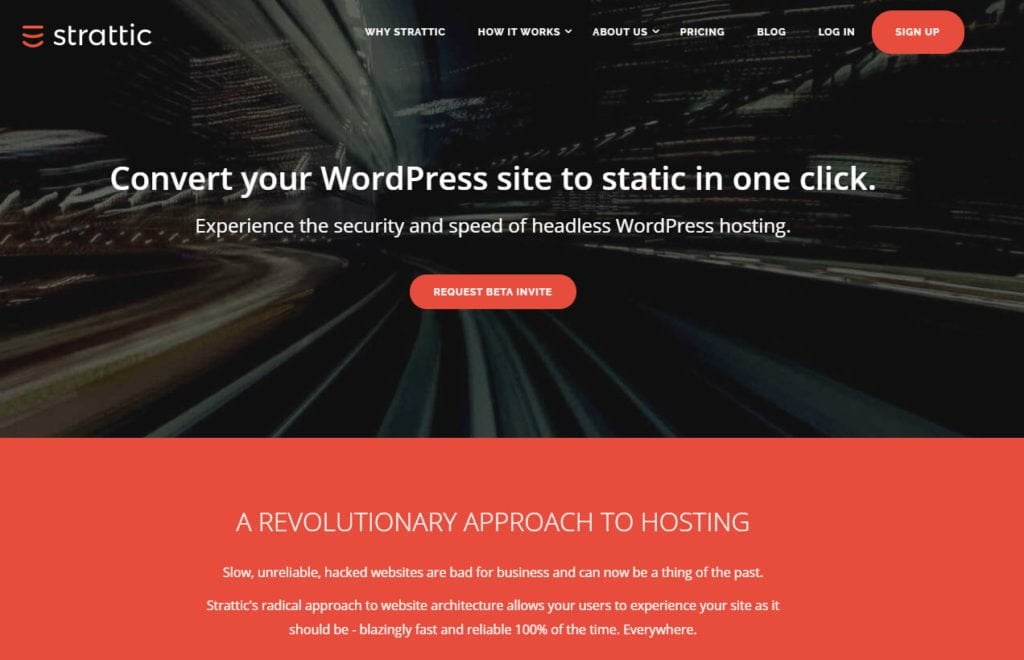
Stattic is a headless WordPress host that allows you to create a lightweight, static version of your WordPress website while allowing you to use WordPress as the backend as usual.
Unlike other options to create a static version of your WordPress site, Strattic goes beyond the limited functionality and boasts a large network of CDNs spread across the world, meaning no matter where your website’s visitors are coming from they will always get blazingly fast loading speed as they will be served the content from the location closest to their location.
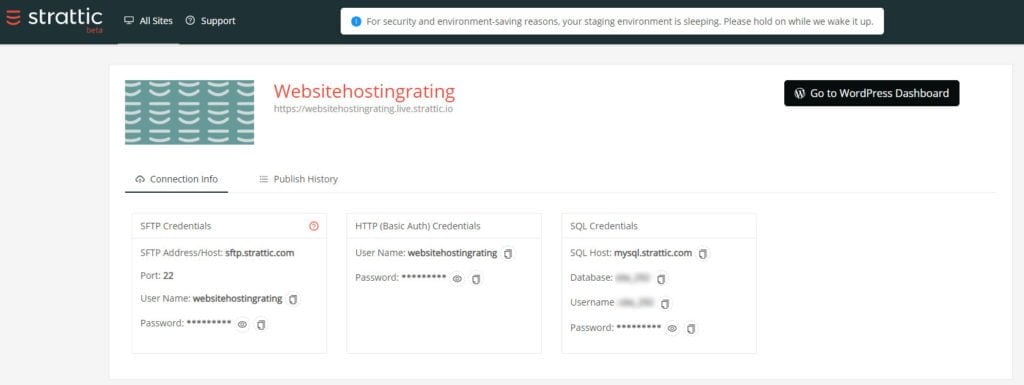
Strattic disconnects the dynamic WordPress site from the web and puts it on a different URL behind authentication so only site owners can access that site. You can continue using your WordPress like you always have – marketing people can still add content, you can still add plugins, and so on.
Similarly, it manages to get around most of the limitations of traditional static site generation solutions as well, thanks to built-in functionality for dynamic elements like contact form, site search function and more.
Strattic proudly claims how it’s a serverless static fast WordPress hosting company with its own serverless architecture, which automatically removes most hacking vulnerabilities and performance concerns associated with hosting servers.

The Starter plan at Strattic is priced at $35 per month and comes with all the features for one website. Strattic will take care of the migration process for you for free no matter which plans you go with.
Get started with Strattic today and create a static, lightweight version of your WordPress website that loads lightning-fast, no matter where your visitors are coming from.
HardyPress
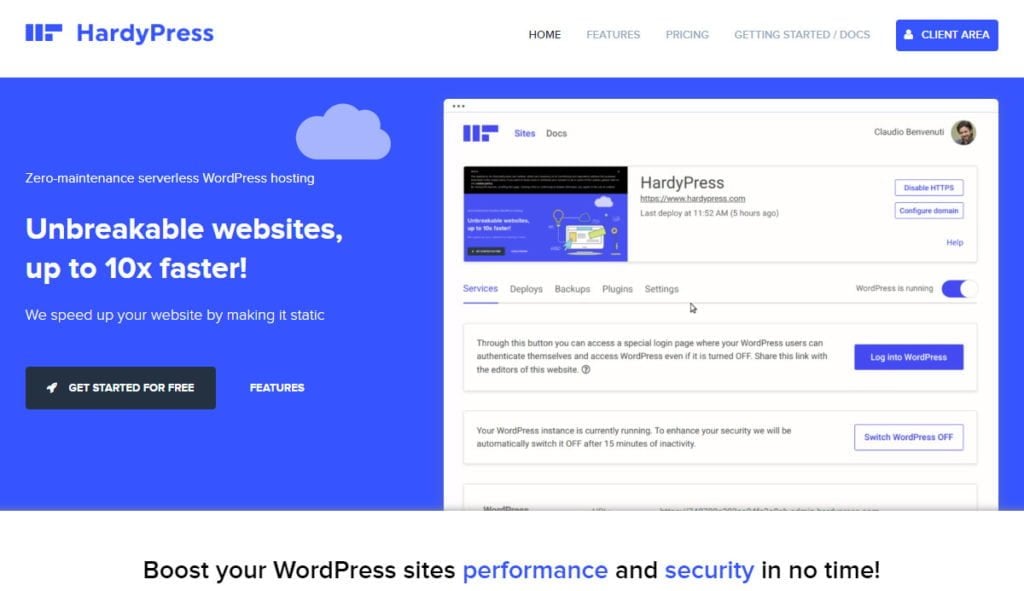
HardyPress is another serverless hosting option for WordPress users. It’s actually much cheaper than Strattic, with the personal website plan being priced just around $5 per month (if you pay yearly), but doesn’t lack anything in terms of functionality.

Boost your WordPress site’s performance and security in no time! Visitors access a completely static version of your website. Your real WordPress installation lives on a separate domain and only runs when an editor needs to make some changes to the content.
In fact, it’s more versatile in that it allows you to use all WordPress plugins that do not have any front-facing dynamic components. HardyPress also supports the popular Contact Forms 7,
while it implements its own search function on your website.
Just like the Strattic, it puts your WordPress installation on a separate domain that no one can access except you while creating a fully static version of your website with 30 locations across the world for even faster loading time.
Some of its other features include SSD technology, HTTPS, the ability to shut down your WordPress instance and more.
Shifter

Shifter is another great WordPress to HTML converter if you’re looking to go static with your WordPress site. It allows you to use all your WordPress themes and plugins (barring the ones with dynamic elements) while being surprisingly easy to set up and maintain.
Use the same WordPress themes, plugins, and tools you know and love without the headaches of hosting or threats from bots and hackers.
There are 1-click options for pretty much everything you need to do, and setting up a new site or migrating your old WordPress site is a breeze with Shifter.
The security and performance would be as good as with the other two static site generation options we reviewed above, with some pretty neat features including deploying to Netlify and notifications for Slack, or even a custom integration as per your needs, HTTP/2 enabled gateway, IPv6 deployment and more.
It has alternatives for your comments and contact form and works just as well with Shopify-based e-commerce sites.
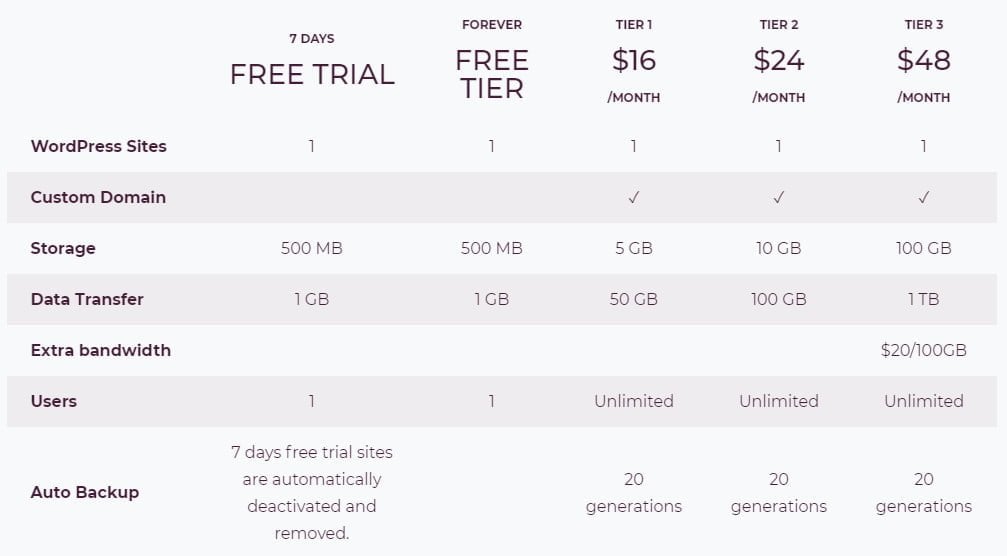
As for the pricing, its most basic plan with no custom domain option is available to use for free for one website, while the cheapest plan with a custom domain is priced at $16 per month.
Converting WordPress Sites to Static HTML: Summary
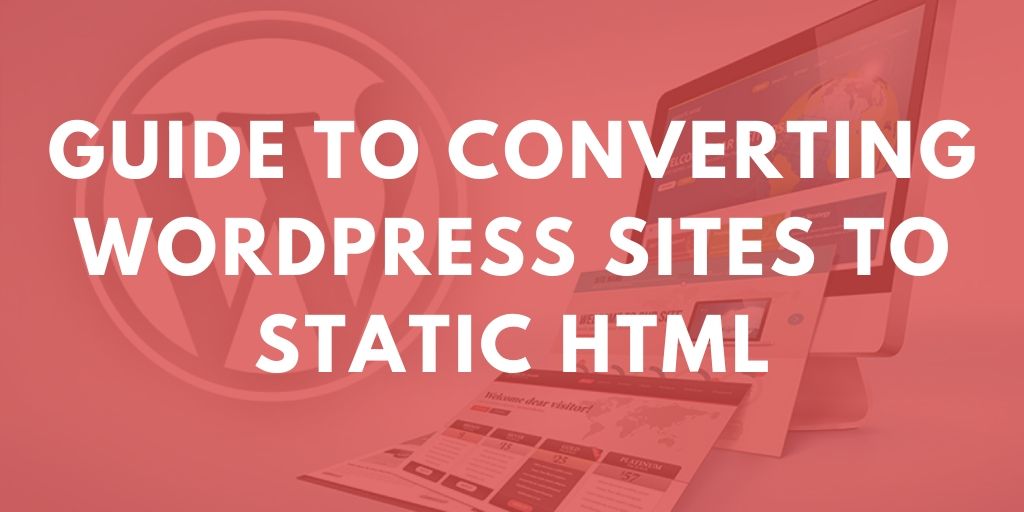
So, which is better HTML or Wordpress? Going static with your WordPress site comes with many benefits, but it’s not for everyone. When it comes to WordPress vs HTML, a lot depends on your preferences and needs here, a kind of a rule of thumb is that if you tend to login into your WordPress dashboard every day or a few times a day, then probably making your WordPress site static would cause more maintenance hassle for you than it would be worth.
That said, even if you don’t tend to make too many changes to your WordPress site every now and then, you should consider which option you need to use to make the transition to a static version of your site.
While the plugin option may seem tempting for users on a budget, it can cause issues for large websites that can be hard to deal with. However, it would likely turn out to be a great budget option for landing pages and small content-only sites.
If you need more functionality or have a fairly large WordPress site, then using one of the third-party serverless static WordPress hosting solutions we reviewed above is the way to go. It not only ensures a super smooth transition but also allows you to use WordPress just the way you did before, while also offering built-in functionality for important dynamic elements like contact forms and website search.
Finally, remember that while a transition to static is sure to improve the overall speed, performance and security of your WordPress website, it’s only an option if you don’t need to use too many dynamic elements.
If you do, then a quality shared hosting and proper speed and performance optimizations is what you should go for instead.

